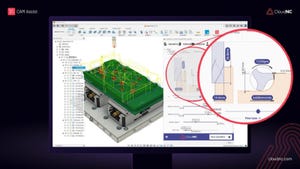Recycled Carbon Fibers Demonstrate Excellent Properties
April 2, 2010

New high-performance structural compounds may soon emergefrom a recent compounding collaboration between Boeing and RTP Co., a globalcompounder of custom-engineered thermoplastics.
Large amounts of carbon-fiber composite scrap arebeginning to emerge from the aircraft industry, which has been ramping upcarbon-composite content. The biggest new generator of material is the Boeing787 Dreamliner, which will be moving into full production mode in thenot-too-distant future. It was disclosed at a recent Society of PlasticsEngineers meeting that Boeing has enlisted RTP to helpfind a useful outlet for growing amounts of scrap.
According to an article byTony Deligio for Plastics Today,Boeing is buying blue-chip grades of carbon fiber at a cost of $5-$50/lb. KevinGaw, a plastics engineer at Boeing, says at least two-thirds of the fiber endsup as scrap. Pyrolysis is used to extract fibers from epoxy matrices in aprocess that can affect the fibers' surface properties.
In a statement to DesignNews, RTP said it is developing high-performance structural compoundsutilizing these reclaimed fibers in a variety of engineered thermoplastic resinsincluding prime, bioplastic, post-industrial and post-consumer recycledfeedstock. Initial evaluations showed that mechanical performance of theseengineered structural compounds with the reclaimed carbon fiber was excellent.
"One of the goals of this project was to evaluate the useof these valuable materials for our development partner, Boeing," says DaveSterling, RTP application development engineer.
Eric Lee, RTP structural products manager, added, "Byapplying RTP Co.'s compounding and formulation expertise we have been able to developsome new high-performance structural compounds for injection molding that havegreat potential in a number of applications and markets."
RTP's target markets for these materials include defense,aerospace, sporting goods, automotive and industrial.
Boeing says an increasing number of decommissionedaircraft have potentially useful scrap material. Some estimates place thenumber of aircraft that will be retired over the next 20 years at close to6,000. A potentially even bigger factor is the ramp-up of the Dreamliner, whichwas originally expected to become commercial in May 2008. Boeing now hopes theplanes will enter service by the end of this year. Production is scheduled to expandto 10 per month in 2013.
Recycled Carbon Fibers Demonstrate Excellent Properties_B
About the Author(s)
You May Also Like



.jpg?width=300&auto=webp&quality=80&disable=upscale)

